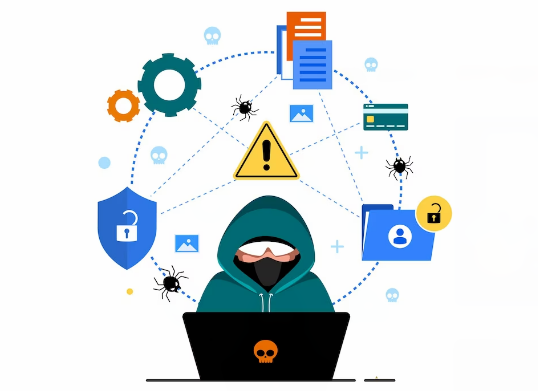Data Privacy and Compliance
Navigating Data Breaches: Response and Mitigation Strategies
Last Updated
2023/07/06

Introduction:
Data breaches have become increasingly prevalent, posing significant risks to organizations and individuals alike. When a data breach occurs, it is crucial for organizations to respond swiftly and effectively to mitigate the potential damages. This blog post provides a detailed guide on navigating data breaches, including response and mitigation strategies to minimize the impact and protect sensitive information.
- Understanding Data Breaches:
a. Definition and Types: Define what constitutes a data breach and discuss different types, including unauthorized access, accidental disclosure, hacking incidents, or lost/stolen devices.
b. Impact and Consequences: Highlight the potential consequences of data breaches, such as financial loss, reputational damage, regulatory penalties, and compromised customer trust.
- Incident Response Planning:
a. Establishing an Incident Response Team: Formulate a dedicated incident response team comprising representatives from IT, legal, public relations, and relevant departments to ensure a coordinated and effective response.
b. Developing an Incident Response Plan: Create a comprehensive incident response plan that outlines the step-by-step procedures to be followed in the event of a data breach. Include roles and responsibilities, communication protocols, and predefined actions to contain and mitigate the breach.
- Detecting and Responding to a Data Breach:
a. Detection and Investigation: Implement robust monitoring and detection systems to identify potential breaches promptly. Establish processes for investigating and verifying suspected breaches, including conducting forensic analysis and preserving evidence.
b. Containment and Mitigation: Take immediate action to contain the breach and mitigate further damage. This may involve isolating affected systems, disabling compromised accounts, changing passwords, and applying security patches.
c. Notification and Communication: Determine the appropriate stakeholders to notify, including affected individuals, regulatory bodies, and law enforcement agencies. Develop clear and transparent communication strategies to address concerns, inform stakeholders about the breach, and provide guidance on protective measures.
- Data Breach Mitigation Strategies:
a. Data Minimization: Review and reassess data collection and retention practices to minimize the amount of personal information stored. Retain only essential data required for business purposes.
b. Encryption and Anonymization: Implement encryption and anonymization techniques to protect sensitive data. Encrypt data in transit and at rest to ensure unauthorized access is futile even in the event of a breach.
c. Employee Training and Awareness: Regularly educate employees about data breach risks, security best practices, and incident reporting procedures. Promote a culture of vigilance and empower employees to identify and report potential breaches promptly.
d. Regular Security Assessments: Conduct regular security assessments, vulnerability scans, and penetration testing to identify weaknesses in your systems and address them before they can be exploited by attackers.
e. Data Breach Drills and Exercises: Conduct periodic data breach response drills to test the effectiveness of your incident response plan and improve response capabilities. Simulate realistic breach scenarios to evaluate the readiness of your organization.
- Post-Breach Analysis and Learning:
a. Forensic Analysis: Conduct a thorough post-breach analysis to identify the root cause of the breach and understand the extent of the compromise. Preserve evidence for legal and regulatory purposes.
b. Lessons Learned and Continuous Improvement: Use the breach as an opportunity for learning and improvement. Assess your response efforts, identify areas for enhancement, and update your incident response plan accordingly.
c. Enhancing Security Measures: Implement additional security measures and controls based on the lessons learned from the breach. This may include stronger access controls, multifactor authentication, improved encryption, or enhanced monitoring systems.
Conclusion:
Data breaches are a significant threat in today’s digital landscape, but with a well-prepared incident response plan and effective mitigation strategies, organizations can minimize the impact and protect sensitive information. By investing in proactive measures, ongoing employee training, and continuous improvement, organizations can navigate data breaches more
effectively and strengthen their overall cybersecurity posture. Remember, preparedness is key. By understanding the steps involved in responding to a data breach and implementing robust mitigation strategies, organizations can better protect themselves and their stakeholders from the devastating consequences of data breaches.
Related Posts
Get Latest Technologies, Development Tips, & Trending Solutions.

Demystifying GDPR: A Comprehensive Guide to Compliance
Introduction:The General Data Protection Regulation (GDPR) is a comprehensive data protection law that sets strict guidelines for how organizations handle and process personal data of individuals residing in the European Union (EU). Since its implementation in May 2018, GDPR has had a significant impact on businesses worldwide. This blog post aims to demystify GDPR and […]

The Importance of Data Privacy: Protecting Your Personal Information Online
Introduction:In today’s digital age, where personal information is increasingly shared and stored online, data privacy has become a critical concern. Safeguarding your personal information is not only essential for protecting your identity and financial well-being but also for maintaining your privacy and control over your digital life. This blog post delves into the importance of […]